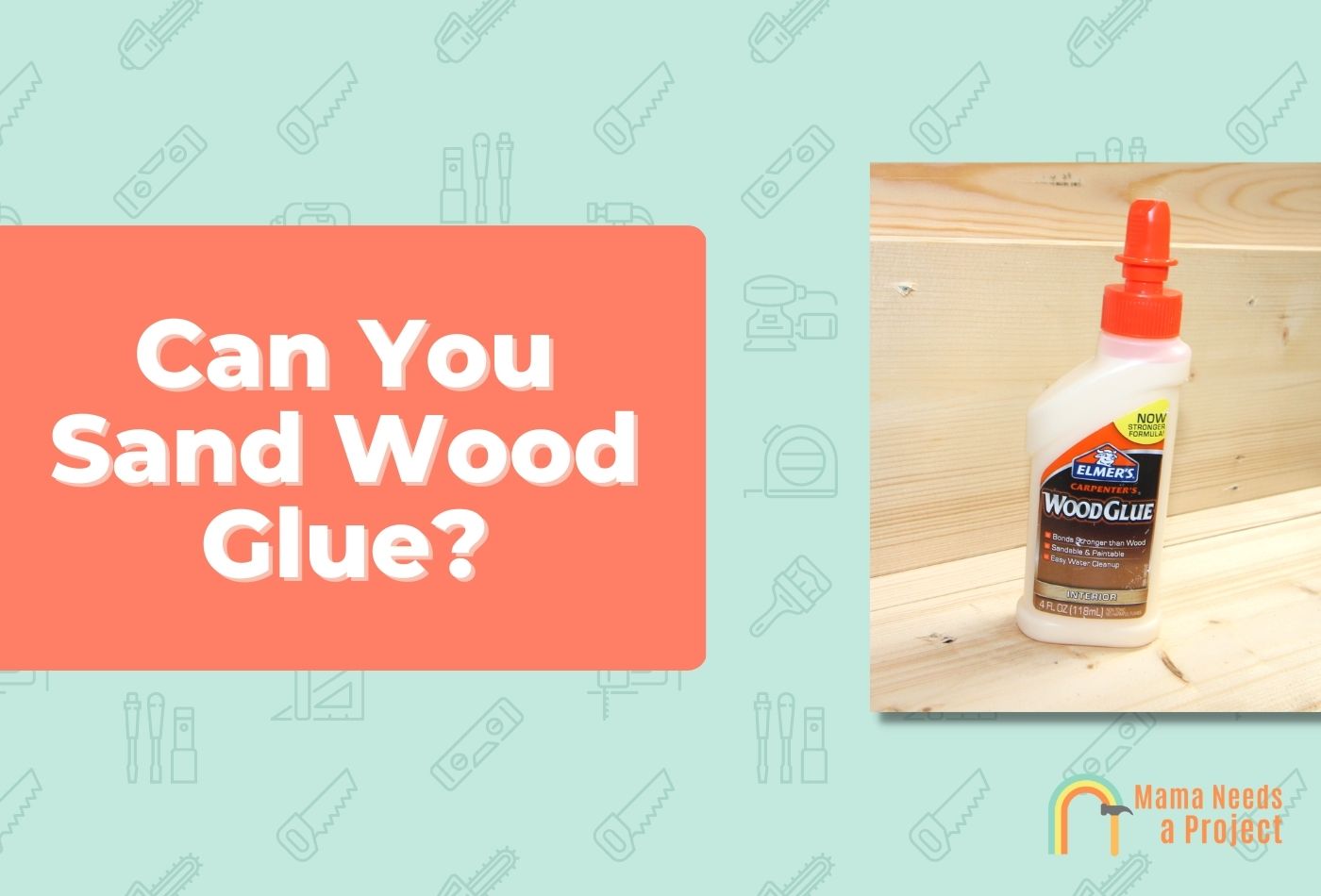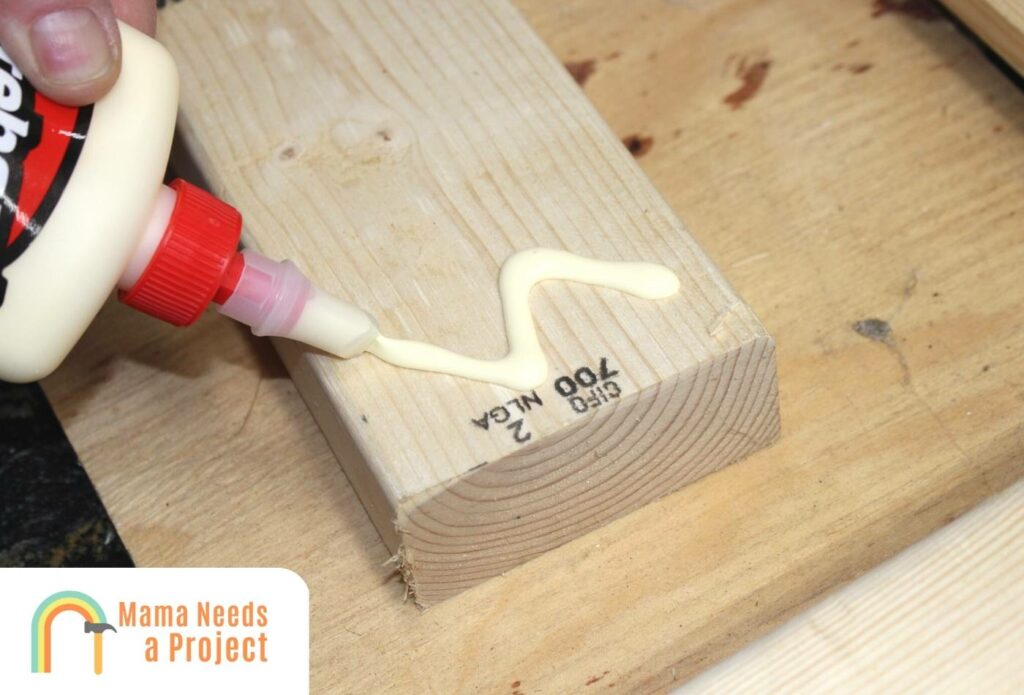If you’re wondering, “can I sand wood glue?” you’ve come to the right place! Sanding wood glue may seem like an unusual question, but it’s actually quite common. In this article, we’ll explore whether sanding wood glue is a good idea and what you should know before attempting it. So, let’s dive in and find out more!
When it comes to woodworking, wood glue is a handy adhesive that helps hold pieces together. But what if you accidentally apply too much glue or end up with dried glue residue? That’s where sanding comes in. Sanding wood glue can remove excess and smoothen the surface. However, there are some important factors to consider before grabbing that sandpaper.
Now that we’ve piqued your curiosity, let’s delve into the details of sanding wood glue and whether it’s a suitable approach. Whether you’re a woodworking enthusiast or simply interested in this fascinating topic, we’ve got you covered. So, let’s get started and explore the world of sanding wood glue together!

Can I Sand Wood Glue?
Wood glue is a versatile and essential adhesive used in woodworking projects. It creates strong bonds between pieces of wood, ensuring stability and durability. However, there may be instances where excess glue spills over or you need to sand down the glued surface for a smooth finish. This article will explore whether sanding wood glue is possible, the best practices to follow, and the potential challenges you may face. So, let’s dive in!
Key Takeaways: Can I Sand Wood Glue?
- Yes, you can sand wood glue once it has fully dried.
- Before sanding, ensure the glue is completely cured, which typically takes around 24 hours.
- Use a fine-grit sandpaper for sanding wood glue to achieve a smooth surface.
- Be cautious when sanding near joints or edges to avoid damaging the surrounding wood.
- After sanding, clean the surface thoroughly to remove any sanding residue before applying finishes or paints.
Frequently Asked Questions
Welcome to our Frequently Asked Questions section where we address common queries regarding working with wood glue. Whether you’re a DIY enthusiast or a professional woodworker, we’ve got you covered. Read on to find answers to your questions about sanding wood glue.
Q1: Can I sand wood glue immediately after applying it?
It is generally not recommended to sand wood glue immediately after applying it. Wood glue needs time to cure and harden before it can be properly sanded. Sanding too soon can disrupt the glue’s setting process and negatively affect the bonding strength. It’s best to wait for the recommended drying time mentioned on the glue’s packaging before attempting any sanding.
Patience is key here. Allow the wood glue to dry completely, which can take anywhere from a few hours to overnight depending on the type of glue used. Once the glue has dried and hardened, you can proceed with sanding to achieve the desired finish and smoothness.
Q2: What is the best way to sand wood glue?
The best way to sand wood glue is to start with a low grit sandpaper and gradually work your way up to a higher grit. Begin with a 120-grit sandpaper to remove any excess glue and smooth out any rough areas. Gradually progress to finer grits such as 220 or 320 to achieve a smoother finish.
When sanding, use light, even pressure and move the sandpaper in a circular or back-and-forth motion. Be careful not to apply too much pressure, as this can damage the wood or create uneven surfaces. Remember to sand evenly across the entire surface to avoid noticeable variations. It’s also recommended to wear protective gear, such as a dust mask and safety goggles, to prevent inhalation of fine wood particles and protect your eyes.
Q3: Should I wet sand wood glue?
No, wet sanding is not recommended for wood glue. Wet sanding is a technique commonly used for finishes, but it is not suitable for removing or smoothing wood glue. Wood glue is water-based, and wetting it can reactivate the glue, causing it to become sticky again rather than allowing it to be sanded away.
Stick to dry sanding methods when working with wood glue. This preserves the integrity of the glue’s bond and ensures better control over the sanding process. Remember to regularly clean the sandpaper to prevent the build-up of glue residue, as this can reduce its effectiveness.
Q4: Can I use an electric sander to sand wood glue?
Yes, you can use an electric sander to sand wood glue, but exercise caution. Electric sanders can generate a lot of power and quickly remove material, which can be helpful in smoothing wood glue surfaces. However, excessive pressure or using a sander at high speeds can result in the glue being sanded too aggressively, potentially damaging the underlying wood or creating uneven surfaces.
If using an electric sander, opt for a lighter touch and start with a lower speed setting. Always keep the sander moving to prevent localized heat buildup that can affect the glue’s bond. Additionally, inspect the sandpaper regularly to ensure it remains clean and free from any adhesive residue.
Q5: How can I remove excess wood glue before sanding?
If you have excess wood glue that needs to be removed before sanding, the best approach is to wait for the glue to partially dry but still remain somewhat pliable. At this stage, it can be gently scraped away with a putty knife or a plastic scraper, being careful not to gouge or damage the wood surface.
Be cautious when removing excess glue, as too much force or aggressive scraping can lead to surface damage. After removing the excess glue, allow the remaining glue to fully dry and harden before proceeding with the sanding process to achieve the desired finish.

05 Tips for Dealing with Glue Squeeze Out
Summary
When it comes to sanding wood glue, it’s not the best idea. The glue might clog the sandpaper, making it less effective. Plus, sanding could also damage the wood and leave uneven surfaces.
Instead of sanding, it’s better to use a sharp chisel or scraper to remove excess glue. This method is gentler on the wood and allows for more precise removal. Remember to wait for the glue to fully dry before attempting to remove it.
